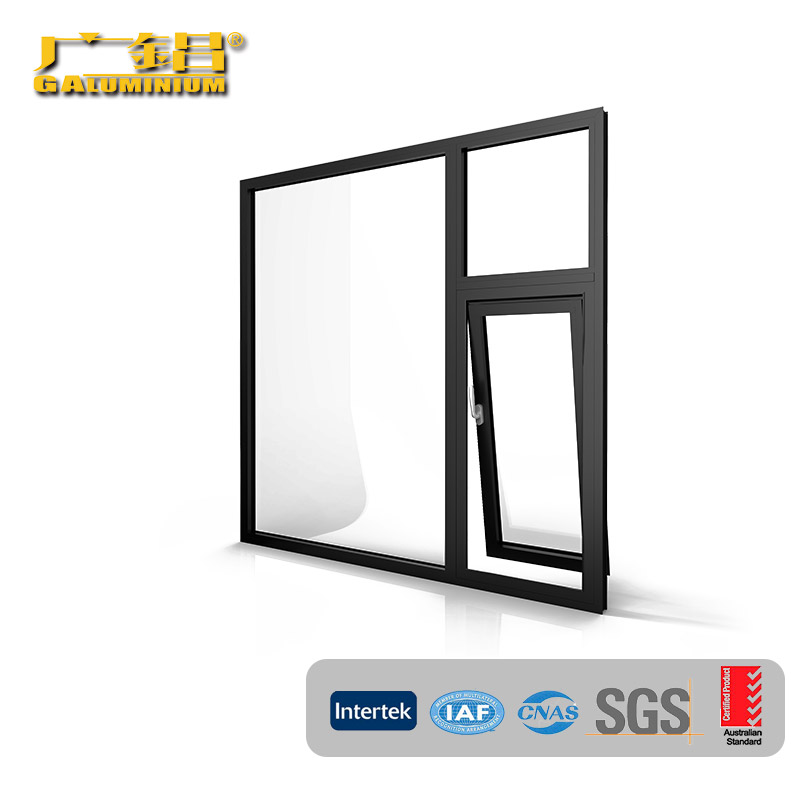The Environmental Impacts of Manufacturing and Disposing of Gray Aluminum Outside-Hung Windows
2024-05-16
Gray aluminum outside-hung windows are prized for their durability, sleek appearance, and functionality. However, like any manufactured product, they come with environmental implications throughout their lifecycle—from production to disposal. Understanding these impacts can help consumers make more informed decisions and encourage industry practices that are more sustainable.
Manufacturing Environmental Impacts
The production of gray aluminum outside-hung windows involves several stages, each contributing to the overall environmental footprint:
1. Raw Material Extraction: Aluminum production begins with the extraction of bauxite ore, which is then refined to produce alumina. This process is energy-intensive and often results in significant habitat disruption, soil erosion, and water contamination due to mining activities.
2. Energy Consumption and Emissions: Transforming alumina into aluminum through electrolysis in smelters requires substantial electricity, often sourced from fossil fuels. This process emits a large amount of carbon dioxide and other greenhouse gases, contributing to climate change. Efforts to use renewable energy sources in aluminum production are increasing but are not yet widespread.
3. Manufacturing Processes: Once the aluminum is produced, it is fabricated into window frames. This involves further energy consumption for shaping, cutting, and treating the aluminum. Additional environmental impacts arise from the use of chemicals and treatments to enhance the durability and aesthetic of the frames, including anodizing or powder coating processes.
4. Transportation: The transportation of raw materials to manufacturing plants and finished products to consumers contributes to the carbon footprint. The environmental impact varies depending on the distances involved and the modes of transportation used, with air and road transport typically having higher emissions than rail or sea transport.
Environmental Benefits During Use
While the production of aluminum windows is energy-intensive, there are notable environmental benefits during their use phase:
1. Energy Efficiency: Aluminum windows can be highly energy-efficient, especially when combined with double or triple-glazed glass. They provide excellent insulation, reducing the need for heating and cooling in buildings. This can significantly lower the energy consumption of a home or office, leading to reduced greenhouse gas emissions over time.
2. Durability and Longevity: Aluminum windows are highly durable and resistant to weathering, which means they have a long lifespan and require less frequent replacement compared to other materials. This longevity reduces the overall environmental impact as fewer resources are needed for replacements and repairs.
Disposal and Recycling
The end-of-life stage of aluminum windows also has significant environmental implications:
1. Waste Generation: Disposing of aluminum windows generates waste. However, aluminum is one of the most recyclable materials available. The recycling process for aluminum requires only about 5% of the energy used to produce new aluminum from raw ore, making it a highly sustainable option.
2. Recycling Process: When aluminum windows reach the end of their life, they can be dismantled, and the aluminum can be recycled into new products. This reduces the need for raw material extraction and minimizes landfill waste. However, the recycling process still involves energy consumption and emissions, albeit much lower than the production of new aluminum.
3. Landfill and Pollution: Non-recycled aluminum and associated materials, such as glass and sealing compounds, can end up in landfills. These materials do not biodegrade and can contribute to long-term environmental pollution. Effective recycling programs and consumer awareness are crucial to mitigating these impacts.
Sustainable Practices and Consumer Choices
To mitigate the environmental impacts of manufacturing and disposing of gray aluminum outside-hung windows, both manufacturers and consumers can take several steps:
1. Sustainable Sourcing: Manufacturers can source aluminum from suppliers that use renewable energy and practice sustainable mining. Certification programs, like those from the Aluminum Stewardship Initiative (ASI), can guide consumers toward more sustainable options.
2. Energy-Efficient Production: Investing in energy-efficient production technologies and renewable energy sources can significantly reduce the carbon footprint of aluminum manufacturing.
3. Recycling and Reuse: Encouraging and facilitating the recycling of aluminum windows at the end of their life is crucial. Manufacturers can design windows that are easier to disassemble and recycle and can participate in or support recycling programs.
4. Consumer Awareness: Consumers can make informed choices by selecting windows from manufacturers that prioritize sustainability and by ensuring proper recycling of old windows.
Conclusion
The environmental impacts of manufacturing and disposing of gray aluminum outside-hung windows are substantial but can be managed through sustainable practices. By understanding these impacts and making conscious choices, both manufacturers and consumers can contribute to a more sustainable future. Emphasizing recycling, energy efficiency, and sustainable sourcing can help mitigate the environmental footprint of these windows, ensuring that their benefits are enjoyed with minimal ecological cost.



